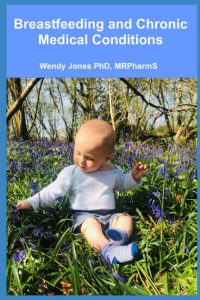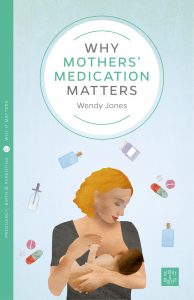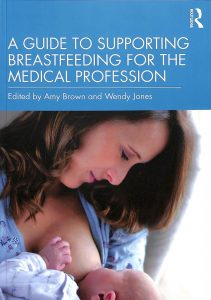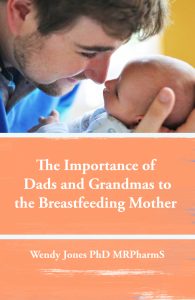I’m hearing of some really weird treatment of topical thrush in the recent few days and weeks.
- suggestion of applying miconazole oral gel to the nipples ( there are currently supply issues nationally at the moment so it is not available) which could be really dangerous and is ineffective
- applying nystatin suspension to the nipples which makes no sense at all
- a variety of creams with no evidence of effectiveness and which would necessitate washing off due to the thickness of the cream and resulting in further damage
- incorrect diagnosis of thrush which sounds much more likely to be an issue with latch which is the most important fact because it misses the opportunity to fix/reinforce the basics.
Do I believe thrush on the nipples exists? Rarely based on the experience of 25 years since I wrote the first leaflet with Magda.
What I see is :
1. Initial problems with latch
2. Latch that has slipped a little around 6 weeks
3. Pain with teething when latch changes
Please please please don’t rush in to treat but look first, second and third time at positioning and attachment particularly if there is pain during breastfeeds. A white tongue does not alone justify treatment as this may be normal or associated with less than perfect latch or tongue tie.
The BfN factsheet on thrush and breastfeeding has currently been withdrawn.
So many contacts recently about thrush and breastfeeding I have decided to record a presentation I have made many times over the years. I will in a few days record one with detailed prescribing information for doctors and pharmacists . A copy of the slides will go onto my website www.breastfeeding-and-medication.co.uk. Hope this helps everyone. I have found it necessary to leave several social media groups for my own sanity after reading threads where non evidence based practice seems to get perpetuated. This is my view after looking at thrush and breastfeeding for the last 20 years.
Posted by Breastfeeding and Medication on Friday, July 20, 2018
Medicalising Sore Nipples – thrush and breastfeeding July 2018
The origin of the BfN Breastfeeding and Thrush leaflet and factsheet
It feels a very long time since I recorded this video and it is now 25 years since Dr Magda Sachs and I wrote the first BfN leaflet about Thrush in Breastfeeding. At that time, as experienced breastfeeding supporters, we had seen maybe 6 mothers between us whose nipple pain had not been resolved by attention to positioning and attachment after months of breastfeeding without problem. We researched and found research about thrush and breastfeeding which exactly described what we were seeing. Those original references included :
Brent N., Thrush in the Breastfeeding Dyad: Results of a survey on diagnosis and treatment, Clin Paed. 2001; 40:503506.
Francis-Morrell J, Heinig MJ et al, Diagnostic value of signs and symptoms of mammary candidosis among lactating women. JHL 2004; 20:288-95 ›
Kaufman D, et al., Fluconazole prophylaxis against fungal colonisation and infection in preterm infants, N Eng J Med 2001; 345(23):1660-6.
Morrill JF et al. Risk factors for mammary candidosis among lactating women. J.Obstet.Gynecol. Neon.Nurse. 2005;34:37-45
We wrote the leaflet and then watched what became an avalanche of queries, recommendation and self diagnoses. Women repeated back to us the words such as “shark’s teeth” that we had used and we noted how hard they were trying to obtain treatment. We updated the leaflet a few years later and then wrote a factsheet as finances didnt allow further printing of leaflets.
Current research
There remains little research on thrush as a cause of nipple pain although it remains in the ABM Clinical Protocol #26: Persistent Pain with Breastfeeding https://abm.memberclicks.net/assets/DOCUMENTS/PROTOCOLS/26-persistent-pain-protocol-english.pdf
Do I still believe thrush affects breastfeeding women and causing nipple pain? Yes but in a small minority of cases. I think that most pain still comes from not quite positioning and attachment in the early days and often around 6 weeks when babies feed frequently and we assume that the latch is ok. I see another rush of instances of pain often described as thrush when babies are teething and again I think in most cases the latch has altered fractionally to take the pain off sore gums.
Miconazole oral gel
I do believe that miconazole gel is much more effective than nystatin drops and that is supported by research. However, there are current major national supply issues.
In 2008 Janssen-Cilag the manufacturers of Daktarin oral gel ® altered the licensed application of the product with respect to the age from which it is recommended. They recommend that it is not licensed for use in babies under 4 months of age and only with care between 4 and 6 months (EMC). I co-authored a paper published in the BMJ about this. https://www.bmj.com/content/338/bmj.a3178.long
This change appears to originate from a published report (De Vries 1996) documenting a 17 day old baby (born at 36 weeks gestation) who choked when exposed to miconazole oral gel applied to her mother’s nipples before and after feeds on the advice of a pharmacist. The baby suddenly stopped feeding and breathing, became cyanotic and lost consciousness. The mother scooped out the visible miconazole gel and the baby recovered within a few moments. The doctor who was called could find no abnormalities and the baby recovered without further problem. The report mentions nine other cases of babies who suffered some form of difficulty with breathing, one of who was admitted to hospital, but all recovered spontaneously.
The current research evidence for nystatin is poor according to Hoppe (1996, 1997).
If practitioners choose to continue to recommend miconazole oral gel they should ensure that the mother/carer is aware that the gel should be applied gently, in small amounts at a time until all the surfaces of the mouth are covered. It is important that a spoon is not used to administer the gel and that the back of the throat is not touched either by the adult’s finger or by the gel (Ainsworth 2009). Healthcare providers must ensure that when recommending this product that the parent/carer is aware of how to apply the gel safely i.e. using a clean finger, apply small amounts of gel at a time, four times a day after feeds. Practitioners who recommend miconazole oral gel that responsibility in a baby under 4 months lies with the person who prescribes or recommends its use. The licensed application does not necessarily imply a risk if used appropriately but each prescription should be considered on an individual basis. Under no circumstances should miconazole oral gel be applied to the mother’s nipples as a means of treating the baby or the mother.
-
- Ainsworth S and Jones W. It sticks in our throats too. BMJ 2009;337:3178
- De Vries TW, Wewerinke ME, de Langen JJ. [Near asphyxiation of a neonate due to miconazole oral gel Ned Tijschr Geneeskd 2006;148:1598–600
- Electronic Medicines compendium – miconazole oral gel SPC emc.medicines.org.uk
- Hoppe JE, Hahn H. Randomized comparison of two nystatin oral gels with miconazole oral gel for treatment of oral thrush in infants. Antimycotics Study Group. Infection. 1996 Mar-Apr; 24(2): 136-9.
- Hoppe JE. Treatment of oropharyngeal candidiasis in immunocompetent infants: a randomised multicenter study of miconazole gel vs. nystatin suspension. The Antifungals Study Group. Pediatr Infect Dis J. 1997 Mar; 16(3): 288-93.
Clotrimazole cream applied to the nipples
The lack of efficacy of clotrimazole cream applied to the nipples is anecdotal after supporting many women. The risk of it causing irritation comes from data supplied personally by Chloe Fisher and Sally Inch at the once famous breastfeeding clinic in Cambridge. Miconazole cream remains preferable in my opinion
The future?
I continue to believe that thrush affecting the breastfeeding dyad is rare and should only be used after all other reasons have been excluded or in the presence of positive swabs.
I refer you to another paper which I was involved in writing. “Identifying the cause of breast and nipple pain during lactation” https://breastfeeding-and-medication.co.uk/wp-content/uploads/2024/06/bmj.n1628.full-.pdf
https://breastfeeding-and-medication.co.uk/wp-content/uploads/2024/06/bmj.n1628.full-.pdf
and to this information from others https://breastfeeding-and-medication.co.uk/fact-sheet/what-do-mothers-want-healthcare-professionals-to-know-about-breast-and-nipple-pain-in-lactation
Queries can be sent to me wendy@breastfeeding-and-medication.co.uk




